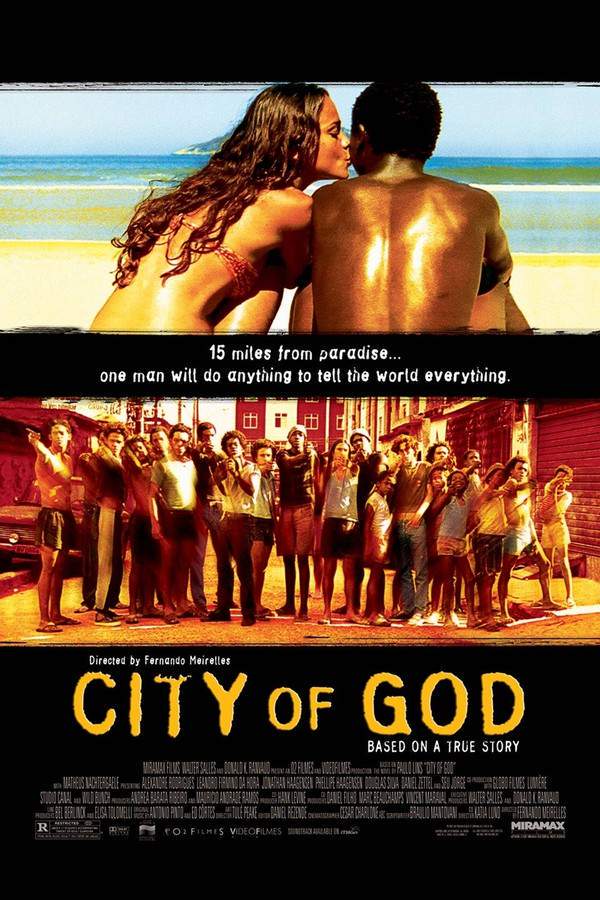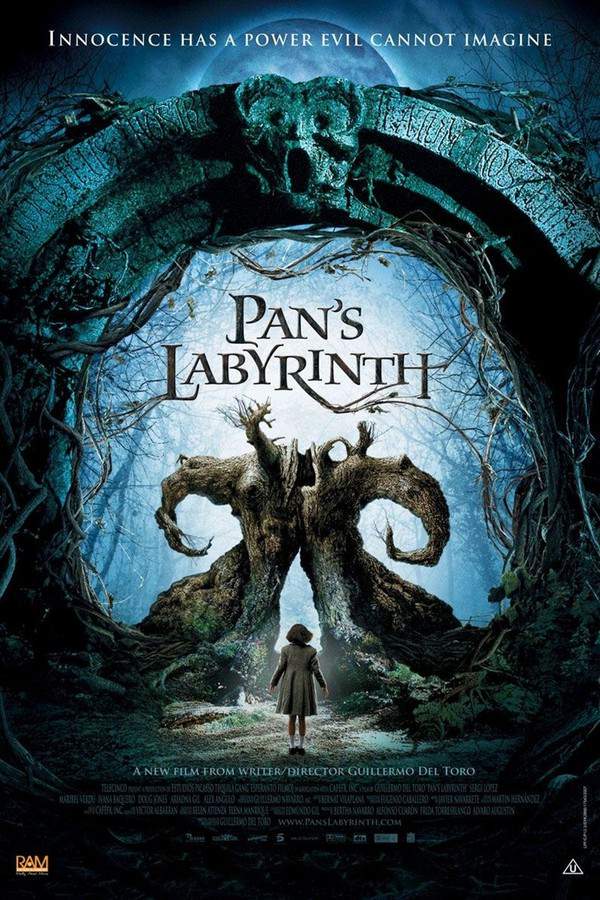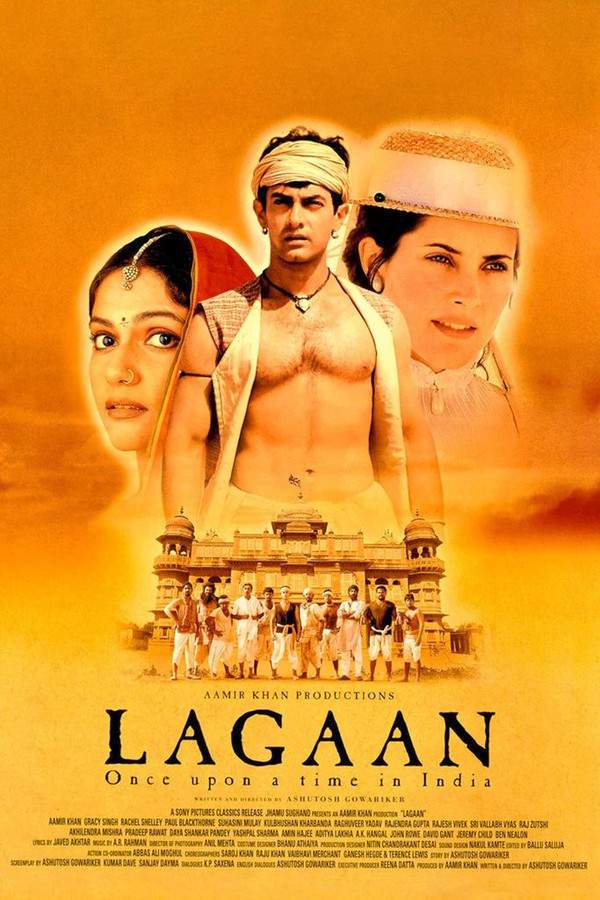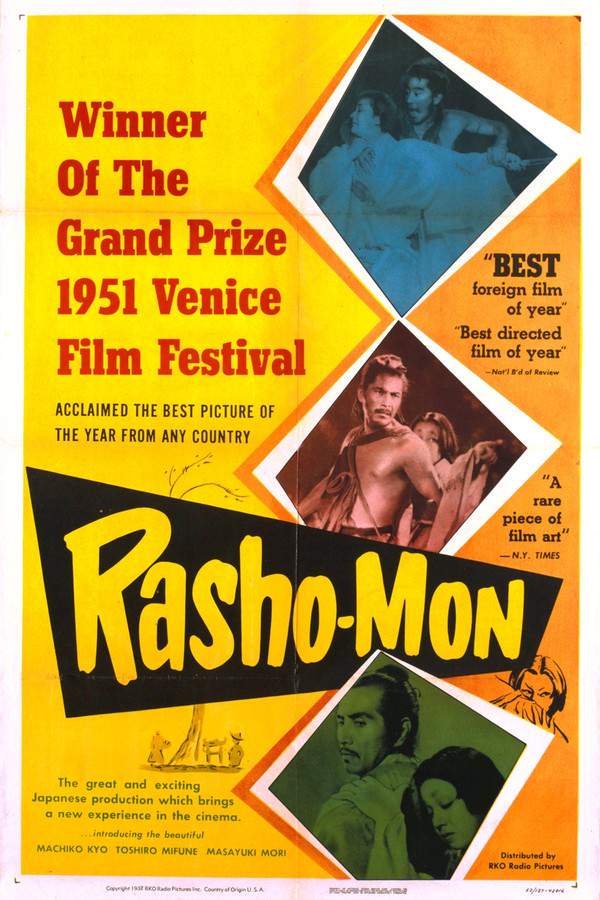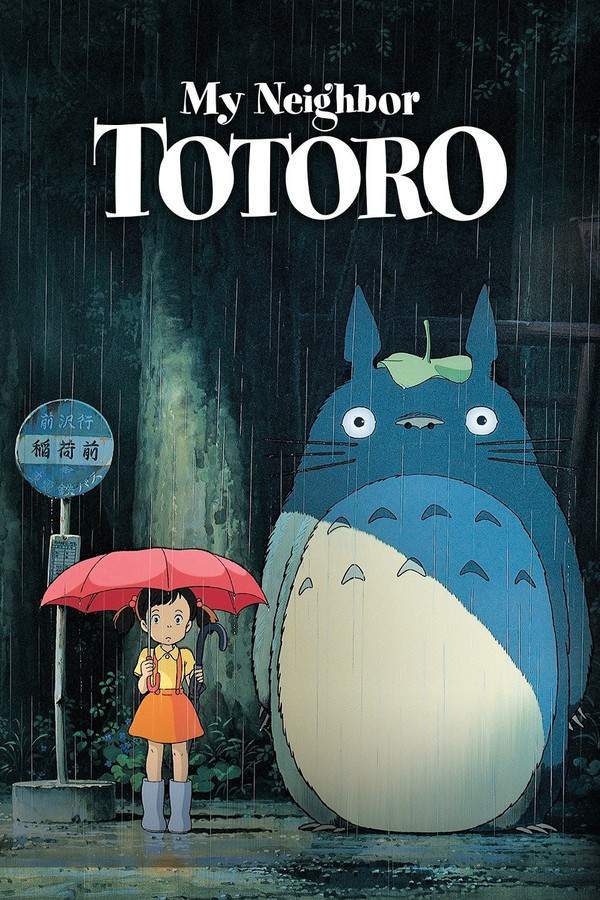What's After the Blog?
International Cinema • Culture
International Cinema: Exploring Films from Around the World
Dive into the world of international cinema with insights on cultural diversity, film festivals, and where to watch global films, on What's After the Movie (ATM) blog.
March 24, 2024

Movies mentioned in this article
International Cinema: Exploring Films from Around the World
Introduction to International Cinema
International cinema, encompassing films produced outside the Hollywood domain, presents a world of diverse narratives, unique storytelling techniques, and rich cultural insights. Unlike mainstream Hollywood productions, international films often focus on local stories, reflecting the societal, political, and cultural realities of their countries of origin. These films offer viewers a window into different worlds, showcasing the universality of human emotions and experiences despite varied cultural backdrops.
For instance, the Iranian film A Separation, directed by Asghar Farhadi, provides not only a compelling narrative but also a glimpse into the complexities of contemporary Iranian society. Similarly, the French classic Amélie, directed by Jean-Pierre Jeunet, takes the audience through a whimsical journey in Paris, offering a unique view of the city and its people. These films, among many others, underscore the importance of international cinema in fostering a global understanding and appreciation of diverse cultures and stories.
Moreover, international cinema challenges viewers to step out of their comfort zones, to engage with different filmic languages, narrative structures, and aesthetic styles. The animated Japanese masterpiece Spirited Away by Hayao Miyazaki, for example, immerses viewers in a visually stunning world, steeped in Japanese folklore and mythology, offering a stark contrast to Western animation styles.
The Rich Tapestry of World Cinema
The tapestry of world cinema is vast and varied, with each country contributing its unique voice and perspective. From the poignant Italian Neorealism of the post-World War II era, as seen in Vittorio De Sica’s Bicycle Thieves, to the vibrant and colorful Bollywood musicals like Dil Chahta Hai, international cinema spans a wide spectrum of genres and styles.
European cinema, for instance, is known for its artistic and often avant-garde approach. Films like Ingmar Bergman’s Wild Strawberries and Federico Fellini’s 81⁄2 have left indelible marks on the history of cinema with their deep philosophical themes and innovative storytelling techniques.
Asian cinema, on the other hand, offers a blend of traditional and modern storytelling. Japanese cinema, with auteurs like Akira Kurosawa, who directed classics like Seven Samurai, is renowned for its meticulous craftsmanship and profound narratives. In contrast, contemporary South Korean cinema, known for films like Bong Joon-ho’s Parasite, combines social commentary with gripping entertainment.
Latin American cinema, with its vibrant storytelling and rich visual aesthetics, offers yet another perspective. Films like Alejandro González Iñárritu’s Amores Perros from Mexico and Walter Salles’ Central Station from Brazil, depict the complexities of human relationships against the backdrop of social and political issues.
These examples barely scratch the surface of the rich diversity that international cinema holds. Each film, each country’s cinema contributes a unique brushstroke to the global canvas of filmmaking, providing audiences with an opportunity to experience the world in ways they might never have imagined.
Cultural Insights through Cinema
Cinema has the extraordinary ability to transcend geographical boundaries and offer profound cultural insights. It serves as a mirror reflecting societal norms, traditions, and the human condition within various cultural contexts. Through international films, viewers can embark on a journey of cultural discovery and understanding, which is essential in our increasingly globalized world.
Take, for example, the captivating Brazilian film City of God, which offers a raw and eye-opening portrayal of life in the favelas of Rio de Janeiro. It’s not just a story of crime and struggle, but a deeper insight into the socio-economic issues that shape the lives of its characters. On a different note, the South African film Tsotsi delves into themes of redemption and morality, set against the backdrop of Johannesburg’s townships. These films, among others, allow viewers to gain a deeper understanding of cultures and lifestyles vastly different from their own.
In addition, films like the Spanish dark fantasy Pan’s Labyrinth, directed by Guillermo del Toro, intertwine historical contexts with imaginative storytelling, providing insights into Spain’s post-Civil War era while engaging viewers in a fantastical plot. Similarly, the Indian film Lagaan, set in the Victorian period of India’s colonial past, combines the entertainment value of a Bollywood musical with a commentary on colonialism and resilience of the human spirit.
By exploring films from around the world, viewers not only enjoy diverse cinematic experiences but also cultivate a deeper understanding and empathy towards different cultures and their histories. International cinema, therefore, plays an indispensable role in promoting cultural awareness and global understanding.
The Evolution of International Filmmaking
The history of international cinema is as diverse as the countries that contribute to it, each with its unique evolution influenced by cultural, political, and social factors. Understanding this evolution provides context to the films we watch and deepens our appreciation of the art form.
Italian Neorealism, a significant movement in the post-World War II era, marked a departure from traditional filmmaking by depicting everyday life’s harsh realities. Films like Roberto Rossellini’s Rome, Open City and Vittorio De Sica’s Bicycle Thieves are prime examples of this movement, known for their use of non-professional actors and on-location shooting, offering a stark, realistic portrayal of post-war Italy.
In France, the New Wave (Nouvelle Vague) of the 1950s and 60s, led by directors like François Truffaut and Jean-Luc Godard, revolutionized filmmaking with their experimental approach to narrative structure and visual style. Godard’s Breathless and Truffaut’s The 400 Blows exemplify this movement’s innovative techniques, which have influenced filmmakers worldwide.
Meanwhile, in Japan, the post-war era saw the rise of directors like Akira Kurosawa and Yasujirō Ozu, who brought Japanese cinema to the international stage. Kurosawa’s Rashomon introduced a groundbreaking narrative technique, telling a story from multiple perspectives, while Ozu’s Tokyo Story is celebrated for its simplicity and emotional depth.
The evolution of international filmmaking is a testament to the resilience and creativity of filmmakers around the world. It showcases how cinema, as an art form, adapts and evolves, reflecting the changing times and societies in which these films are made.
Breaking Language Barriers: The Role of Subtitles and Dubbing
In the realm of international cinema, subtitles and dubbing play a pivotal role in breaking language barriers, allowing audiences worldwide to access and appreciate films from different cultures. This aspect of film presentation not only makes international films accessible to a broader audience but also fosters a greater understanding and appreciation of different cultures and languages.
Subtitles, for one, provide a way for viewers to experience the film in its original language, preserving the authenticity of the performances and the nuances of the dialogue. This is particularly important in films where language and delivery are integral to the character and story, as seen in the French film Amélie or the Korean thriller Oldboy. On the other hand, dubbing can make films more accessible to younger audiences or those who prefer a more seamless viewing experience, as seen in the widespread popularity of dubbed versions of Studio Ghibli’s films like My Neighbor Totoro.
The debate between watching films in their original language with subtitles versus dubbed versions often comes down to personal preference and the nature of the film itself. While some purists argue that subtitles offer a more authentic experience, others find that dubbing allows for a more immersive and less distracting viewing experience. Regardless of the preference, the importance of subtitles and dubbing in promoting international cinema cannot be understated, as they enable films to transcend linguistic boundaries and reach a global audience.
Award-Winning International Films
International films have not only captivated global audiences but have also garnered critical acclaim and prestigious awards in various international film festivals and award ceremonies. These accolades highlight the universal appeal and artistic merit of these films, bringing them to the attention of a wider audience.
One of the most notable examples in recent years is the South Korean film Parasite, directed by Bong Joon-ho, which made history by winning the Palme d’Or at Cannes Film Festival and the Academy Award for Best Picture, among other accolades. This dark comedy-thriller captivated audiences with its ingenious plot, social commentary, and cinematic excellence. Another significant film is Alfonso Cuarón’s Roma, a Mexican drama that received multiple awards for its poignant storytelling and visual artistry.
These films, and many others like them, demonstrate the power of international cinema to resonate with audiences and critics alike, regardless of their country of origin. They showcase the diverse storytelling techniques, innovative approaches, and unique perspectives that international filmmakers bring to the global cinematic landscape. The recognition and celebration of these films at international platforms not only elevate the status of international cinema but also encourage viewers to explore and appreciate the rich tapestry of films from around the world.
International Film Festivals: Windows to World Cinema
International film festivals serve as vital platforms for showcasing the diversity and richness of world cinema. These festivals are not just events for screening films; they are cultural gatherings that bring together filmmakers, critics, and audiences from all corners of the globe. They play a crucial role in promoting international films, offering filmmakers a stage to present their work and providing audiences with an opportunity to experience cinema beyond their national borders.
The Cannes Film Festival in France, for example, is renowned for its prestigious selection of films and has been a launching pad for many international films. Here, films like the Italian drama La Dolce Vita and the Japanese film Shoplifters gained international acclaim. Similarly, the Berlin International Film Festival, known for its politically charged selections, provides a platform for films that might not receive attention in the mainstream market. The Sundance Film Festival in the United States focuses on independent films, giving a voice to filmmakers with limited budgets but powerful stories, as seen with the success of Whiplash.
These festivals not only celebrate the artistry of film but also facilitate discussions and collaborations, leading to a cross-pollination of ideas and styles. They are instrumental in shaping trends in cinema and influencing the tastes of both critics and audiences. For movie enthusiasts looking to explore the vast world of international cinema, these festivals offer a curated experience of some of the finest films from around the world.
”Where can I find international films to watch?” Exploring Platforms and Resources
One common question among movie enthusiasts is where to find and watch international films. Fortunately, in today’s digital age, access to international cinema is more convenient than ever. Various streaming services, film libraries, and online platforms provide a wide array of international films at your fingertips.
Streaming services like Netflix, Amazon Prime, and Hulu have expanded their international film collections, offering titles from various countries and in different languages. Specialized streaming platforms like MUBI and The Criterion Channel curate a selection of classic and contemporary international films for cinephiles. Additionally, film libraries and cultural centers often host screenings of international films, providing an opportunity to experience these films in a communal setting.
For those interested in specific details about international films, such as their end credit scenes, cast, and director information, platforms like What’s After the Movie (ATM) can be invaluable resources. ATM not only offers a comprehensive database of films but also enhances the viewing experience by providing additional information that might be of interest to moviegoers.
In summary, whether through streaming services, specialized platforms, or community screenings, there are numerous ways for audiences to explore and enjoy the vast and varied world of international cinema.
Conclusion
In conclusion, international cinema offers a kaleidoscopic view of the world, transcending cultural and linguistic barriers to tell universal stories. Through exploring films from around the globe, we not only entertain ourselves but also gain insights into different cultures, societies, and human experiences. The diversity of international films, from the poetic realism of French cinema to the vibrant storytelling of Bollywood, enriches our understanding of the world and broadens our cinematic horizons.
The journey through international cinema is an endless adventure, one that brings to light the commonalities and differences of human experiences across the globe. As audiences, we are fortunate to live in an era where access to these diverse narratives is readily available, be it through film festivals, streaming platforms, or community screenings. We encourage movie enthusiasts to delve into the world of international films, to embrace the unfamiliar, and to discover the rich tapestry of stories that lie beyond their own borders.
Invitation to Explore Further
Thank you for joining us on this exploration of international cinema. If this journey through the diverse world of films has sparked your interest, we invite you to continue your cinematic adventure with our other blog posts. At What’s After the Movie (ATM), we offer a wide array of content that caters to all movie enthusiasts, from in-depth analyses of specific genres to the latest updates in film technology.
Our platform not only discusses various aspects of cinema but also provides valuable information about films, including end credit scenes, descriptions, and ratings. Whether you are a seasoned cinephile or a casual movie-goer, ATM is your go-to source for enriching your movie-watching experience. Join our community of movie lovers, share your thoughts, and continue to explore the fascinating world of international cinema.
Continue reading

What's After the Movie?
Not sure whether to stay after the credits? Find out!
Explore Our Movie Platform
New Movie Releases (2025)
Famous Movie Actors
Top Film Production Studios
Movie Plot Summaries & Endings
Major Movie Awards & Winners
Best Concert Films & Music Documentaries
Movie Collections and Curated Lists
© 2025 What's After the Movie. All rights reserved.










